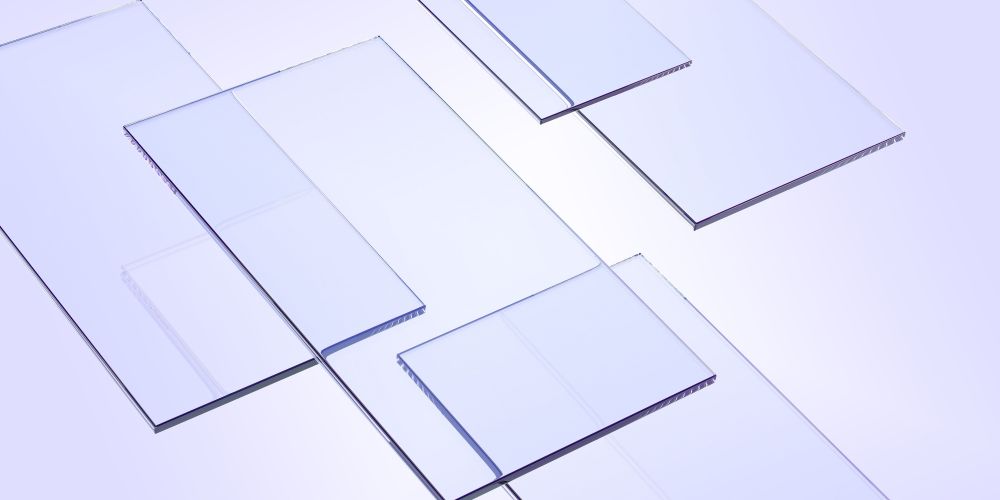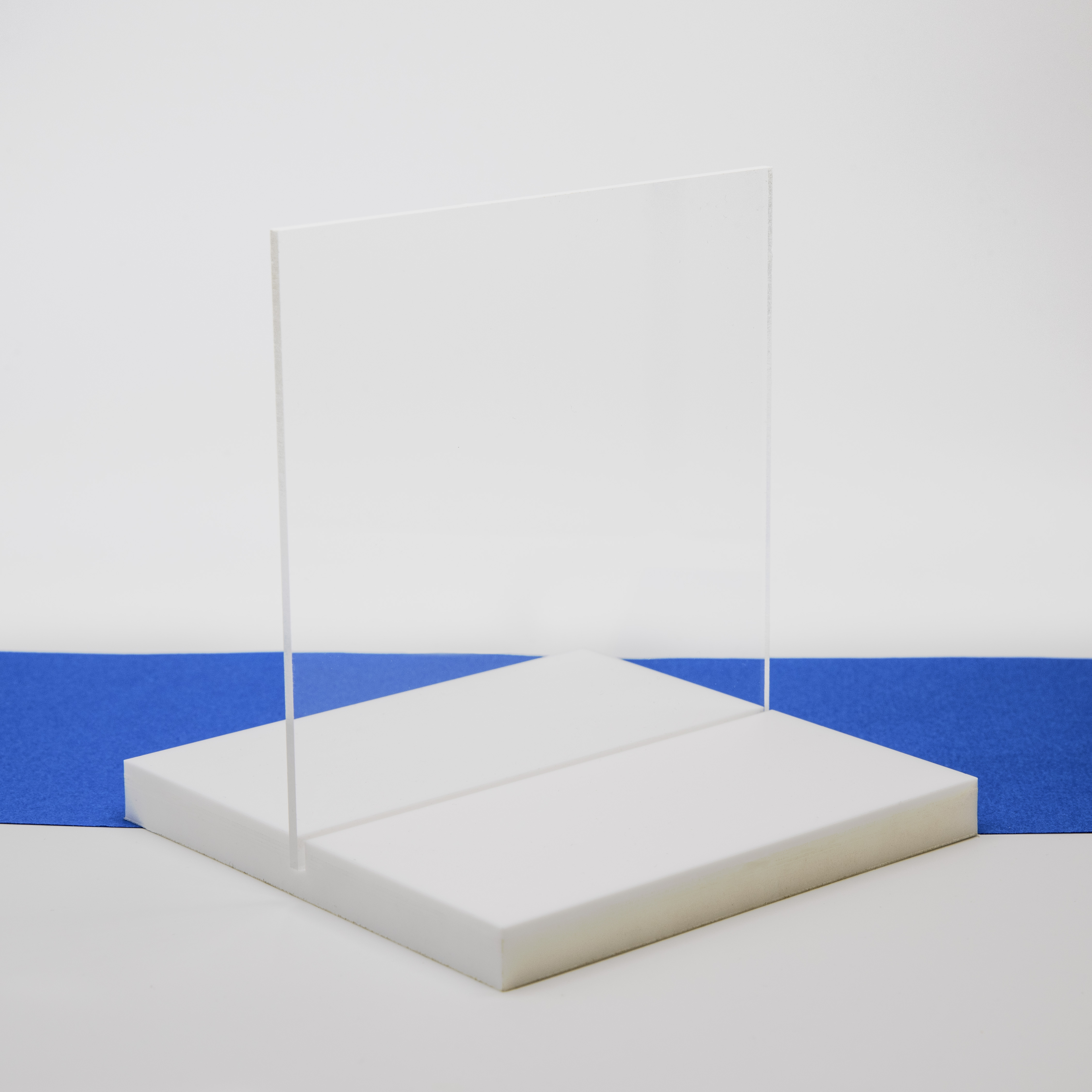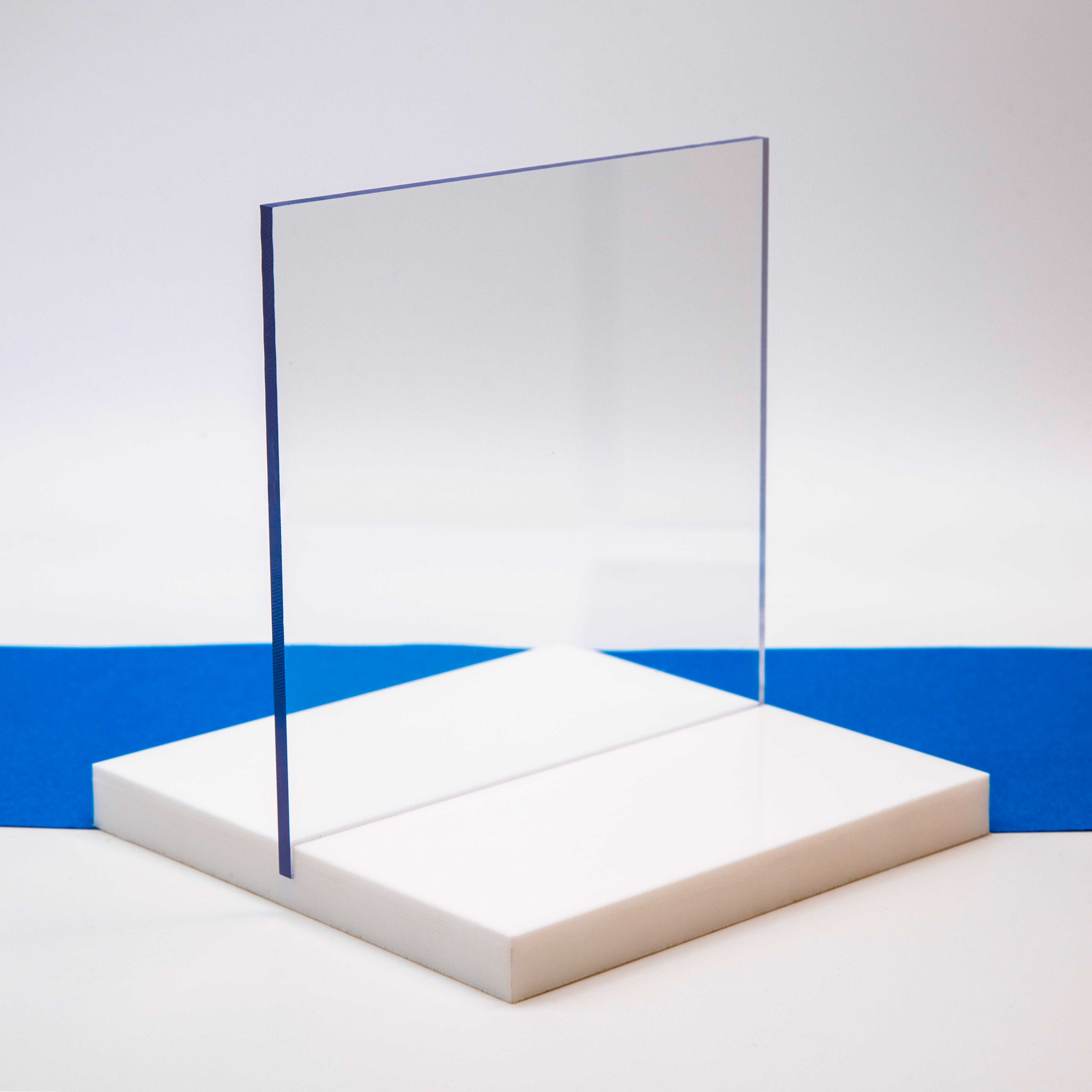Acrylic and polycarbonate are two of the most common and versatile clear plastic materials used across a huge range of domestic and industrial applications. But what’s the difference between acrylic and polycarbonate? And how do you choose the right material for the job? Luckily while they look similar, their properties are very different. Here's what you need to know.
Acrylic vs Polycarbonate - An Overview of the Differences
Both materials feature impressive impact resistance. Both compare well with glass, making good glass alternatives. And they both weigh less than half the weight of glass. Here are some more key facts and features:
- Sheet-grade polycarbonate is usually sold under the brand names Lexan and Makrolon. Acrylic sheet brands include Perspex, Lucite, Optix and Plexiglass
- Polycarbonate is the strongest, with more than 30 times the impact resistance of glass. Acrylic has 10-24 times the impact resistance of glass
- As a general rule, acrylic sheet is more shiny and polycarbonate is stronger
- Acrylic comes in every imaginable colour. Polycarbonate comes in fewer colours
- Polycarbonate can go slightly yellow when exposed long-term to UV rays
- Both materials can suffer scratches, so you can't use abrasive cleaning materials on them. But it's easier to repair scratches in acrylic than in polycarbonate
- Acrylic tends to be a bit clearer than polycarbonate, slightly more transparent
- Polycarbonate usually costs more than acrylic, sometimes a lot more
- Acrylic is easier to cut. Polycarbonate is better if you need to drill, and you can use a standard drill bit
- Acrylic is easier to break, especially if you drill close to the edge
- Acrylic sheets can be polished to a smooth finish, but you can't polish polycarbonate
- Acrylic is extremely rigid and cracks more easily than polycarbonate. Polycarbonate comes in both rigid and flexible grades
- Acrylic isn't recommended in areas close to fire or heat. Polycarbonate is better at handling heat, up to 115 C, and is resistant to fire as well as acids and other chemicals
- Polycarbonate is good for cold-forming and bending without heat, but it also dents easily
- Both are salt-resistant so good for coastal areas
- Both are 100% recyclable
Key Features
Chemical Structure
The key variance between acrylic and polycarbonate stems from their differing chemical compositions. Acrylic is a polymer derived from the polymerisation of an acrylic acid monomer. The most common type of acrylic is polymethyl methacrylate (PMMA). Polycarbonate, on the other hand, is a polymeric material constructed from bisphenol A and carbonyl chloride through a condensation reaction.
These differences in chemical structure impact the overall properties and performance characteristics of each plastic material. Acrylic’s methyl groups make it more resistant to fracturing, while polycarbonate’s aromatic rings lend it enhanced strength.
Strength and Durability
When it comes to durability, polycarbonate has a clear edge over traditional acrylic. Polycarbonate has very high impact strength and fracture toughness, making it remarkably more impact-resistant than acrylic. Polycarbonate panels and sheets can withstand exposure to strong blows and mechanical shocks without cracking or fracturing.
Acrylic is comparatively more brittle, meaning it is susceptible to cracks and breakage when subject to blunt force. Acrylic’s lower strength also makes it easier to machine and cut than polycarbonate. For applications where durability is paramount, polycarbonate is frequently the material of choice.
UV Resistance
An important consideration for any clear plastic sheet or panel is how well it will withstand exposure to UV light over time. Prolonged contact with the sun’s UV rays can cause clear plastics to yellow, haze or become brittle.
Here, polycarbonate again has a significant advantage. Its chemical structure allows it to resist prolonged UV exposure incredibly well, retaining its optical clarity much longer than acrylic when used in outdoor settings. Acrylic will show signs of UV degradation in 1-2 years, whereas polycarbonate can last 5 years or longer before any noticeable yellowing or hazing.
Thermal Properties
The thermal characteristics of any plastic are important to factor in when selecting materials. Acrylic and polycarbonate react differently when heat is applied. Polycarbonate has a much higher heat deflection temperature than acrylic, retaining its stiffness and form at temperatures above 130°C. Acrylic begins to soften at temperatures above 80°C.
This gives polycarbonate an advantage in applications where high heat is expected. For example, polycarbonate is well-suited to lighting fixture covers, electrical insulation, and automotive headlights where the plastic must withstand the heat produced.
Optical Clarity
One area where acrylic excels is in optical clarity. Cast or extruded acrylic typically provides better overall optical clarity and light transmission than polycarbonate sheeting. Acrylic also can be produced in a wider range of colours while retaining high transparency. These optical characteristics make acrylic well-suited to point-of-purchase displays, aquariums, and retail store fixtures that require clear viewing.
Thermal Properties
The thermal characteristics of any plastic are important to factor in when selecting materials. Acrylic and polycarbonate react differently when heat is applied. Polycarbonate has a much higher heat deflection temperature than acrylic, retaining its stiffness and form at temperatures above 130°C. Acrylic begins to soften at temperatures above 80°C.
This gives polycarbonate an advantage in applications where high heat is expected. For example, polycarbonate is well-suited to lighting fixture covers, electrical insulation, and automotive headlights where the plastic must withstand the heat produced.
Cost Comparison
As you might expect, the higher performance polycarbonate typically comes with a higher price tag. Polycarbonate sheets generally cost 50-75% more than comparable acrylics. The ease of fabrication also influences cost, with acrylic again being the more economical choice. Laser cutting, CNC cutting, drilling and other modifications are simpler with acrylic than polycarbonate. For large production runs, acrylic can achieve significant per-unit cost savings.
Popular Uses for Acrylic Sheet
Knowing its uses is often the easiest way to decide which material you need. Here are some of the most popular uses for acrylic plastic sheets.
- Fish tanks and vivarium
- Retail point-of-sale displays
- Kitchen and bathroom splashbacks
- Presentation boards for businesses
- Table protectors and cut-to-size table tops
- Displays for retail, schools, colleges, boardrooms and more
- To clad walls and old kitchen cabinet doors
- To replace glass in furniture
- As signage
- To use as secondary glazing within the home
- For craft projects and artwork
- To make contemporary shelving
- As a safer, lighter, cheaper alternative to glass in picture frames
- To replace small glass windows
Popular Uses for Polycarbonate Sheet
Here are some of the most common uses for polycarbonate sheeting.
- Racing car windows
- Replacement greenhouse glass
- Transparent visors for sport
- Re-usable drinking bottles
- Computer, phone and tablet screens
- Machine safety guards
- Bulletproof glass, security glass and safety goggles
- Semiconductor parts
- Nameplates and signage
- Greenhouses, carports and conservatories
- Roofing and trims
- Bus shelters
- As a replacement for glass in buildings, for example, skylights.
Conclusion
Acrylic and polycarbonate each offer unique benefits making them suitable for a range of domestic and industrial uses. For strength, durability and heat resistance, polycarbonate leads the way. But for optical clarity, fabrication ease and economy, acrylic can’t be beaten. By understanding their key differences and properties outlined here, you can make an informed choice between acrylic and polycarbonate for your next DIY, construction or manufacturing project.




